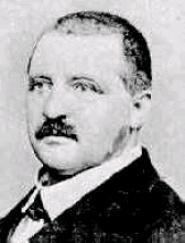Composed 1869 (1869) | Catalogue WAB 100 Movements 4 | |
 | ||
Recorded 1951 (1951) Henk Spruit, Netherlands Philharmonic Orchestra | ||
The Symphony in D minor, WAB 100, was composed by Anton Bruckner in 1869 between Symphony No. 1 (1866) and Symphony No. 2 (1872). In 1895 Bruckner declared that this symphony "gilt nicht" (does not count) and he did not assign a number to it. The work was published and premiered in 1924.
Contents
Composition
Bruckner composed this symphony from 24 January to 12 September 1869. It was initially designated Symphony No. 2, while the C minor symphony of 1872 was called Symphony No. 3.
In 1895, when Bruckner reviewed his symphonies in order to have them published, he declared that this symphony "does not count" ("gilt nicht"). He wrote on the front page "annulli(e)rt" (annulled) and replaced the original "Nr. 2" with the symbol "∅".
According to the conductor Georg Tintner, this lack of confidence in the work arose from a question by the puzzled conductor of the Vienna Philharmonic Orchestra, Felix Otto Dessoff, who asked Bruckner, "Where is the main theme?" The symbol "∅" was later interpreted as the numeral zero and the symphony got the nickname Die Nullte ("No. 0"). In the words of David Griegel, "Like many other composers, I believe Bruckner was merely being too self-critical, and the unnumbered symphonies are also works worthy of our enjoyment".
Because of the designation Die Nullte, the biographers Göllerich and Auer felt it was composed before Symphony No. 1. Contrary to this assumption, the autograph score is dated 24 January to 12 September 1869, and no earlier sketch or single folio of this work has been retrieved. The work, which is sometimes referred to as "Symphony in D minor, opus posthumous", but is in English most often called "Symphony No. 0", was premiered in Klosterneuburg on 12 October 1924.
Editions
The symphony is available in two editions:
Analysis
The score calls for a pair each of flutes, oboes, clarinets, bassoons, four horns, two trumpets, three trombones, timpani, and strings.
It has four movements.
First movement, Allegro
The work begins with an ostinato in the strings that is in D minor.
Leopold Nowak suggested that the answer to Desoff's question is that the principal theme is in the first movement of Symphony No. 3 in D minor, which also begins with an ostinato.
Second movement, Andante
Nowak places all markings of Andante for this B♭ major movement in parentheses.
Third movement, Scherzo: Presto – Trio: Langsamer und ruhiger
Loud and rather ferocious, the theme has something of the qualities of the Mannheim rocket, but its chromaticism suggests the future music of Shostakovich.
The Trio's theme in G major has hints of G minor.
Unlike later scherzos, this one has a separate coda for the reprise of the Scherzo.
Fourth movement, Finale: Moderato – Allegro vivace
The movement begins with a slow introduction. The theme in the violins,
is accompanied by semiquavers (i.e. sixteenth notes) in the woodwinds (music that shows up again in the development). This gives way to the main theme of the following allegro-movement,
which does double duty as a third theme. The second theme
reminds some listeners of Rossini.
Selected discography
The first commercial recording of the symphony was by Fritz Zaun with the Berlin State Opera Orchestra in 1933. It included only the scherzo, in the Wöss edition. The first commercial recording of the complete symphony was by Henk Spruit with the Concert Hall Symphony Orchestra in 1952.
Performances and recordings of the "complete" Bruckner Symphonies often exclude this "nullified" Symphony, most notably excepting the boxed sets of Riccardo Chailly, Eliahu Inbal, Bernard Haitink, Georg Tintner, Gennady Rozhdestvensky, Stanislaw Skrowaczewski and former Chicago Symphony Orchestra conductors Daniel Barenboim and Sir Georg Solti.
